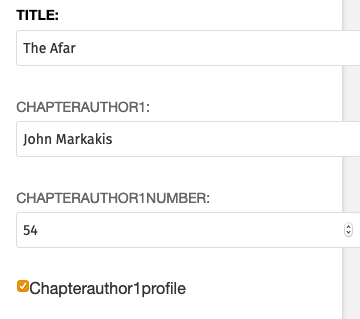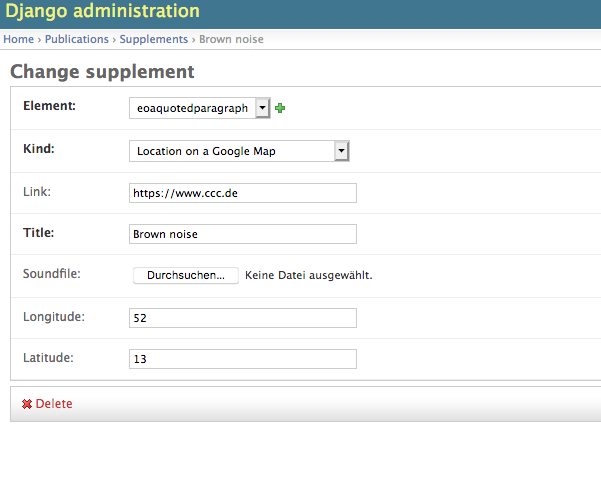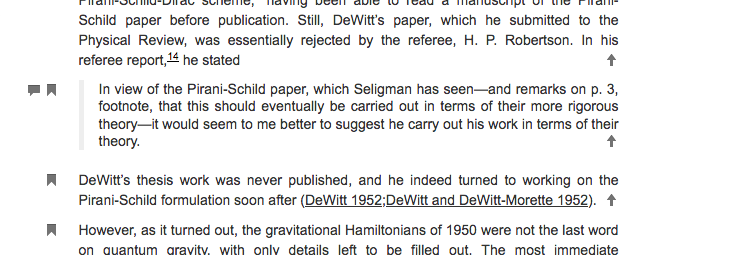The Django admin interface¶
The publications are managed through the Django admin interface. The different entries are described below.
Authors¶
The authors section is the registry of authors. It is extended by another application, eoaauthors, and the usage is documented in that project: EOA Authors Usage.
Chapters¶
Chapters are added automatically with the import of a publication. Also, chapter authors are written automatically in the respective fields. There are three things that should be edited in the chapters administration.
PDF file of chapter¶
In order to offer a PDF file of a single chapter, it can be uploaded on the corresponding chapter page. A workflow suggestion for the creation of chapter PDFs is at Publishing a book. See also Creation of frontmatters.
Connection to chapter author profile¶
The author number has to be added manually, if a connection between the chapter and the author is desired. In order to display the chapter on the author’s profile page, tick the box next to Chapterauthor1profile (and so on):

DOI assignment¶
If DOIs are available, the chapter DOI should be entered in the corresponding field.
Elements¶
Indexelements¶
Indexsections¶
Publications¶
Reports¶
Reviews¶
Supplements¶
One feature that has never been used up until now in the platform is the Supplement feature. Supplements can be attached to paragraphs (or equivalents) and serve as links to maps, audio files or portals like ECHO, Europeana or Arxiv.
This figure shows the django administration page. The first dropdown menu would in theory offer all available elements, which are a lot. So, the supplement is best imported with the import of the publication. However, none of the scripts seem to have the appropriate functionality.

Surprisingly, the front-end has an icon for the Supplement.

And when clicked on, it shows some rudimentary information, but not the links.
